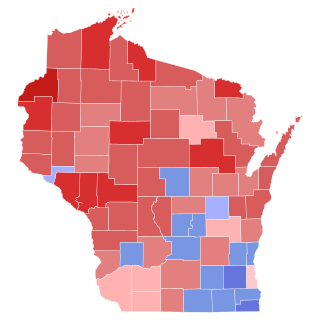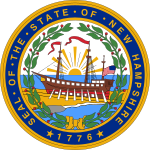
Fred Herbert Brown was an American lawyer, baseball player, and politician from New Hampshire. A member of the Democratic Party, Brown was the 59th governor of New Hampshire and a United States Senator.

Vermont's 2012 general elections were held on November 6, 2012. Primary elections were held on August 28, 2012.

The 1922 United States Senate special election in Pennsylvania was held on November 7, 1922. Incumbent Republican Senator George Pepper, who had been appointed to the seat by Governor William Sproul following the death of Boies Penrose, was elected to fill the remaining four years on the term to which Penrose had been elected in 1920. Pepper comfortably defeated five other candidates, including Democratic nominee Fred Kerr of Clearfield County.

The 1988 United States presidential election in Massachusetts took place on November 8, 1988, as part of the 1988 United States presidential election, which was held throughout all 50 states and D.C. Voters chose 13 representatives, or electors to the Electoral College, who voted for president and vice president.

The 1988 United States presidential election in Connecticut took place on November 8, 1988, as part of the 1988 United States presidential election, which was held throughout all 50 states and D.C. Voters chose eight representatives, or electors to the Electoral College, who voted for president and vice president.

The 1988 United States presidential election in Vermont took place on November 8, 1988, as part of the 1988 United States presidential election, which was held throughout all 50 states and D.C. Voters chose three representatives, or electors to the Electoral College, who voted for president and vice president.

A general election was held in the U.S. state of Vermont on November 2, 2004. All of Vermont's executive officers were up for election as well as Vermont's at-large seat in the U.S. House and Class 3 U.S. Senate seat. The 2004 presidential election was also held at the same time.

The 1948 North Dakota gubernatorial election was held on November 2, 1948. Incumbent Republican Fred G. Aandahl defeated Democratic nominee Howard I. Henry with 61.33% of the vote.

The 1922 Colorado gubernatorial election was held on November 7, 1922. Democratic nominee William Ellery Sweet defeated Republican nominee Benjamin Griffith with 49.64% of the vote.

The 1922 Nevada gubernatorial election was held on November 7, 1922. Democratic nominee James G. Scrugham defeated Republican nominee John H. Miller with 53.88% of the vote.

The 1924 New Hampshire gubernatorial election was held on November 4, 1924. Republican nominee John Gilbert Winant defeated Democratic incumbent Fred H. Brown with 53.94% of the vote.

The 1924 Wisconsin gubernatorial election was held on November 4, 1924. Primary elections were held on September 2, 1924.

The 1926 Wisconsin gubernatorial election was held on November 2, 1926. Primary elections were held on September 7, 1926.

The 1928 Wisconsin gubernatorial election was held on November 6, 1928. Primary elections were held on September 4, 1928. Incumbent Republican Governor Fred R. Zimmerman was defeated in the Republican primary. Republican nominee Walter J. Kohler Sr. defeated Democratic nominee Albert G. Schmedeman with 55.38% of the vote.

The 1930 Wisconsin gubernatorial election was held on November 4, 1930. Primary elections were held on September 16, 1930. Incumbent Republican Governor Walter J. Kohler Sr. was defeated in the Republican primary. Republican nominee Philip La Follette defeated Democratic nominee Charles E. Hammersley with 64.76% of the vote.

The 1932 Wisconsin gubernatorial election was held on November 8, 1932. Incumbent Republican Governor Philip La Follette was defeated in the Republican primary, and in the midst of the Great Depression and nationwide voter dissatisfaction with the Republican Party, Democratic nominee Albert G. Schmedeman defeated Republican nominee Walter J. Kohler Sr. and Socialist nominee Frank Metcalfe with 52.48% of the vote. Schmedeman became the first Democrat to win a gubernatorial election in Wisconsin since George Wilbur Peck in 1892. Two years later, in 1934, La Follette would run for governor again and defeated Schmedeman, this time running with the Progressive Party.

A general election was held in the U.S. state of Wyoming on Tuesday, November 2, 1926. All of the state's executive officers—the Governor, Secretary of State, Auditor, Treasurer, and Superintendent of Public Instruction—were up for election. Republicans narrowly picked up the governorship and solidified their control on the other statewide offices, increasing their margin of victory in each race.

A general election was held in the U.S. state of Wyoming on Tuesday, November 7, 1922. All of the state's executive officers—the Governor, Secretary of State, Auditor, Treasurer, and Superintendent of Public Instruction—were up for election. Democrats improved considerably from their performances in 1918, with William B. Ross winning the gubernatorial election and almost all of their statewide candidates outpacing their 1918 nominees. However, Republicans held all of the other statewide offices.

A general election was held in the U.S. state of Wyoming on Tuesday, November 3, 1914. All of the state's executive officers—the Governor, Secretary of State, Auditor, Treasurer, and Superintendent of Public Instruction—were up for election. Governor Joseph M. Carey declined to seek re-election to a second term, and Democratic State Senator John B. Kendrick was elected as his successor. Republicans, however, won all of the other statewide executive offices, including picking up the Superintendent's office.

The 1924 Illinois lieutenant gubernatorial election was held on November 4, 1924. Incumbent Republican Lieutenant Governor Fred E. Sterling won a landslide reelection.




















